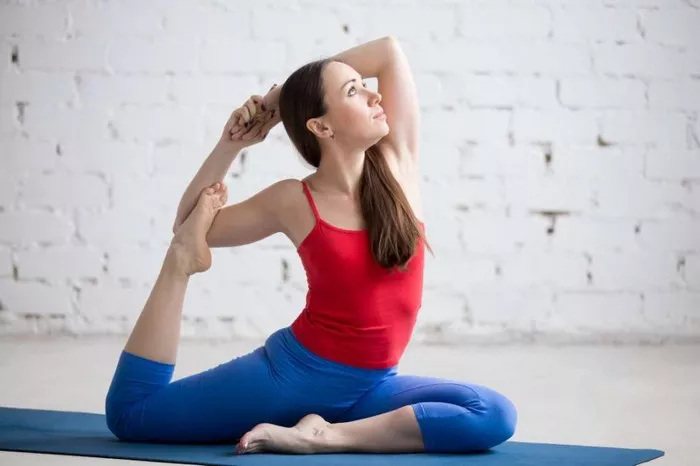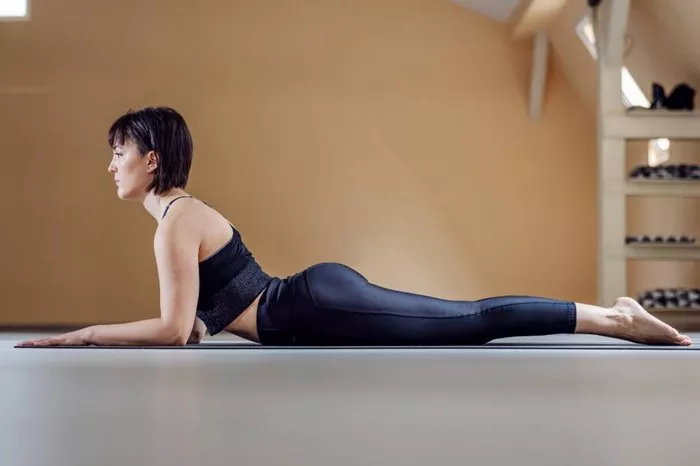Yoga, an ancient practice that originated in India, has gained immense popularity worldwide for its myriad of physical and mental health benefits. For beginners embarking on their yoga journey, selecting the right poses can be a daunting task. However, starting with simple yet effective poses can lay a strong foundation for a fulfilling yoga practice. In this article, we’ll explore five of the best yoga poses tailored specifically for beginners. These poses focus on building strength, flexibility, and mindfulness without overwhelming newcomers to the practice.
1. Mountain Pose (Tadasana)
Tadasana, also known as Mountain Pose, serves as the foundation for many other yoga poses. Despite its apparent simplicity, this pose requires attention to alignment and engages various muscle groups throughout the body. To perform Tadasana:
- Stand tall with your feet hip-width apart, distributing your weight evenly across both feet.
- Engage your thigh muscles, lift your kneecaps, and tuck your tailbone slightly to lengthen your spine.
- Roll your shoulders back and down, extending your arms alongside your body with palms facing inward.
- Keep your gaze forward and breathe deeply, grounding yourself into the earth like a sturdy mountain.
Practicing Tadasana regularly helps improve posture, balance, and concentration, making it an ideal starting point for beginners.
2. Child’s Pose (Balasana)
Balasana, commonly known as Child’s Pose, offers a soothing stretch for the back, shoulders, and hips, making it an excellent posture for relaxation and stress relief. To practice Balasana:
- Begin on your hands and knees, with your wrists aligned under your shoulders and your knees under your hips.
- Exhale as you gently lower your hips back toward your heels, allowing your forehead to rest on the mat.
- Extend your arms forward or alongside your body, relaxing your shoulders and allowing your chest to melt toward the ground.
- Take slow, deep breaths, focusing on the sensation of your breath expanding your lower back and sides.
Child’s Pose provides a gentle stretch for the spine and helps release tension in the body, making it an ideal posture for beginners and experienced yogis alike.
3. Downward-Facing Dog (Adho Mukha Svanasana)
Adho Mukha Svanasana, or Downward-Facing Dog, is a foundational yoga pose that stretches and strengthens the entire body while promoting relaxation and focus. To practice Downward-Facing Dog:
- Start on your hands and knees, with your wrists slightly in front of your shoulders and your knees directly below your hips.
- Exhale as you lift your hips toward the ceiling, straightening your arms and legs to form an inverted V shape with your body.
- Press firmly into your palms and heels, engaging your core muscles and lengthening your spine.
- Keep your neck relaxed and gaze toward your thighs or navel, allowing your head to hang freely.
Downward-Facing Dog helps improve flexibility in the hamstrings, shoulders, and calves, while also relieving stress and fatigue in the body.
4. Warrior I (Virabhadrasana I)
Virabhadrasana I, or Warrior I pose, is a powerful standing posture that builds strength, stability, and confidence. This pose energizes the entire body while also improving focus and concentration. To practice Warrior I:
- Start in Mountain Pose (Tadasana), then step your left foot back about 3 to 4 feet, aligning your left heel with your right heel.
- Rotate your left foot slightly outward and bend your right knee, ensuring it is stacked directly over your right ankle.
- Inhale as you sweep your arms overhead, reaching toward the sky with your fingertips and lengthening your spine.
- Square your hips toward the front of the mat and engage your core muscles to stabilize your posture.
- Hold the pose for several breaths, then switch sides to perform Warrior I on the opposite leg.
Warrior I strengthens the legs, arms, and core, while also promoting balance and mental focus, making it an essential posture for beginners to master.
5. Corpse Pose (Savasana)
Savasana, also known as Corpse Pose, is often considered the most challenging yoga posture despite its apparent simplicity. This final relaxation pose allows practitioners to integrate the benefits of their practice and cultivate deep relaxation and inner peace. To practice Savasana:
- Lie flat on your back with your legs extended and your arms resting alongside your body, palms facing upward.
- Close your eyes and allow your body to completely relax, releasing any tension in your muscles and letting go of any thoughts or distractions.
- Focus on your breath, allowing it to flow naturally and effortlessly in and out of your body.
- Remain in this pose for 5 to 10 minutes, or longer if desired, soaking in the sensations of relaxation and tranquility.
Savasana rejuvenates the body and mind, reducing stress and promoting overall well-being, making it an essential part of any yoga practice, especially for beginners.
Conclusion
These five yoga poses offer a comprehensive introduction to the practice for beginners, providing a balance of strength, flexibility, relaxation, and mindfulness. By incorporating these poses into your daily routine, you can lay a solid foundation for a lifelong yoga practice and experience the transformative benefits it has to offer. Remember to listen to your body and honor its limits as you explore these poses, gradually deepening your practice over time.





















